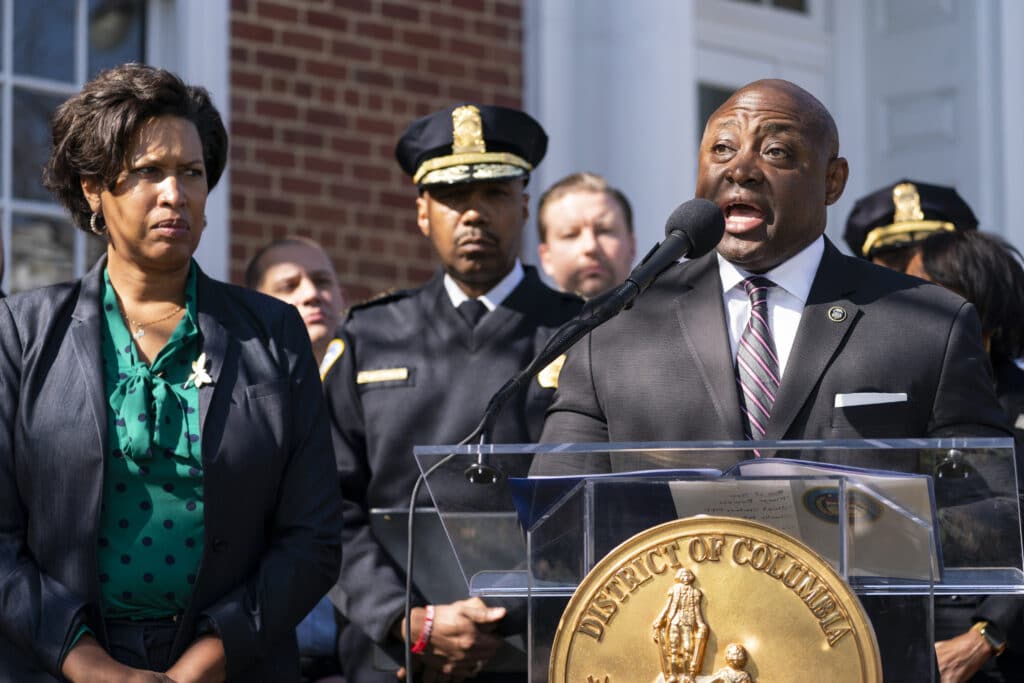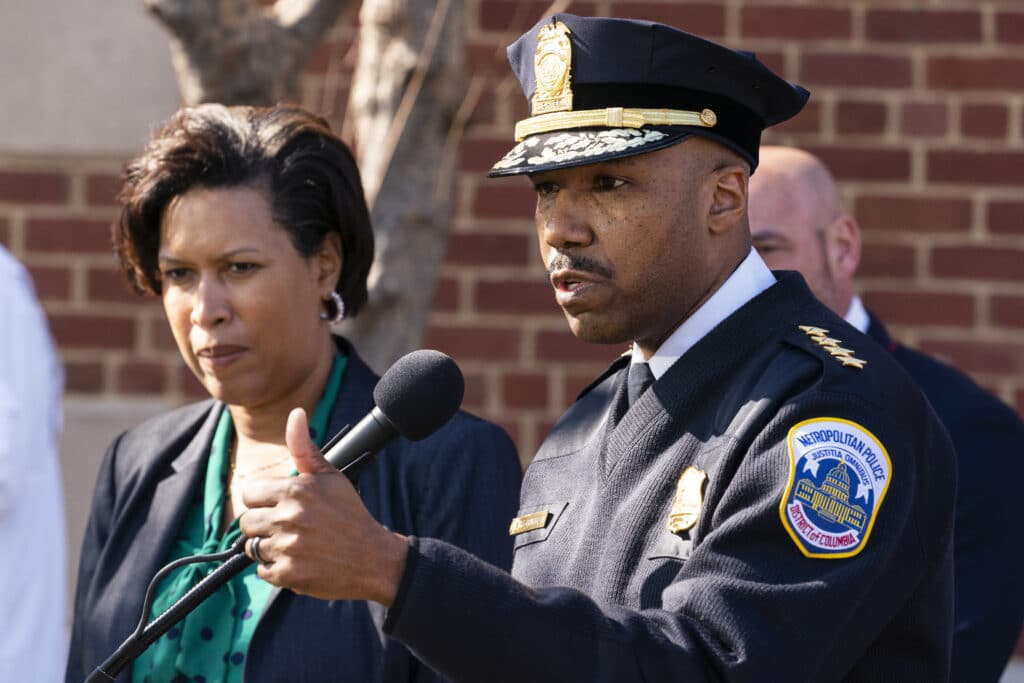Gerald Brevard, 30, was arrested and held without bail for shooting and killing homeless people in New York City and Washington D.C. Police have released information about him that is disturbing, including the fact he appeared to stop and listen to music on a mobile device after killing. The Associated Press has the story:
Alleged homeless killer was caught on surveillance pouring gasoline into a cup at a gas station
WASHINGTON (AP) — A man suspected of shooting five homeless people in Washington and New York City — killing two of them — appeared to hold up a phone and play music after he shot one one of the victims and was caught when a longtime friend identified him after police linked the cases through ballistics evidence, telephone records and the suspect’s social media posts, prosecutors said Wednesday.
Gerald Brevard, 30, was ordered held without bail after appearing before a judge in Washington on a first-degree murder charge in connection with the death of 54-year-old Morgan Holmes, who was found shot and stabbed inside a burning tent in Washington this month. Brevard has not been formally charged in the other Washington shootings or the New York cases.
Prosecutors allege Brevard escalated his violence as he stalked and shot homeless people asleep on the streets of the two cities over a 10-day period. The earliest known shooting happened at around 4 a.m. on March 3 in Washington, police said, when a man was wounded in the city’s Northeast section.

A second man was wounded on March 8, just before 1:30 a.m. In that shooting, surveillance video captures a man yelling, “no, no, no” and “please don’t shoot” after a gunshot was fired, court documents say. The video shows the suspect a few minutes after the shooting sitting on a curb about a block away and playing music from a mobile device, according to the court papers.
In court Wednesday, Magistrate Judge Tanya Jones Bosier pointed to that allegation as one of multiple reasons to hold Brevard without bail, saying he is alleged to have played the music “as if there was some kind of amusement” after the shooting.
Around 3 a.m. the next day, police and firefighters found Holmes dead inside a burning tent. He initially was thought to have suffered fatal burns, but an autopsy revealed he had died of multiple stab and gunshot wounds. Surveillance video showed the suspect pouring gasoline into a cup at a gas station nearby about 30 minutes before the fire was discovered, prosecutors said.
According to court documents, the fatal shooting and the first incident occurred within one-half mile of each other and less than two miles from the second wounding.
“This is a disturbing escalation of violent behavior, particularly against individuals who are already vulnerable because they live on the street,” assistant U.S. attorney Sarah Santiago said.
Brevard, she said, carried out “unprovoked attacks of people living on the streets.”
Less than an hour after Holmes’ body was discovered, the suspect walked into Washington’s Union Station and stayed inside the station until he hopped aboard a train around 6:15 a.m., court papers say.
Police believe Brevard then traveled north to New York City. Surveillance video showed a man who investigators believe is Brevard at Penn Station in Manhattan around 3:30 a.m. on March 12.
An hour later, a 38-year-old man sleeping on the street in Manhattan not far from the entrance to the Holland Tunnel was shot in his right arm as he slept. The victim screamed, and the gunman fled, police said. About 90 minutes later, the gunman fatally shot another man in SoHo, police said. The man’s body was found in his sleeping bag just before 5 p.m. Saturday. He had been shot in the head and neck, said Julie Bolcer, a spokesperson for the New York City medical examiner’s office.
Police identified Brevard after a tipster who knew him called and provided his name, telephone number and Instagram profile. Brevard also posted photos on Instagram showing him wearing a black quilted jacket, similar to what was worn by the suspect in two of the shootings.
Police also obtained phone records showing Brevard has been in Washington and New York City when the shootings occurred. Ballistics evidence has connected the New York and Washington cases, prosecutors said.
He was arrested by federal agents early Tuesday morning in Washington.
Brevard’s lawyer, Ron Resetarits, argued in court that his client should be released because of conflicting statements about the suspect’s description given by witnesses in New York and Washington. He also pointed to the fact that police have not recovered a gun in the case.
His client, he said, has lived in the Washington area for more than 20 years and had worked at a variety of businesses, including a wine store, a nightclub, a bagel shop and restaurants. But prosecutors alleged Brevard had a lengthy criminal history in Washington, Virginia and Maryland on charges that included assaulting a police officer and assault with a deadly weapon. He also had a bench warrant and failed to appear for a trial in Maryland in 2021, prosecutors said.
By MICHAEL BALSAMO and ASHRAF KHALIL







